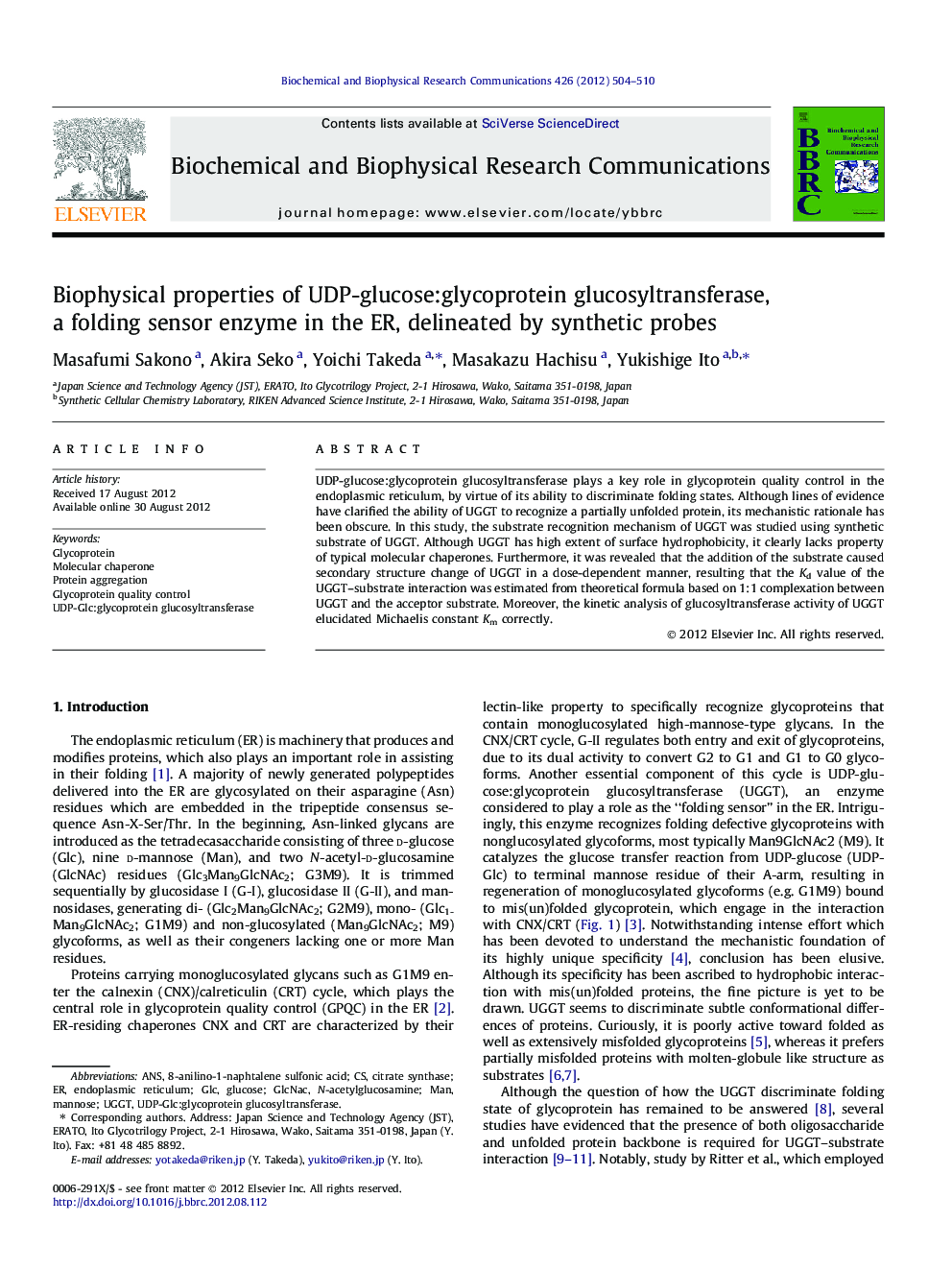| Article ID | Journal | Published Year | Pages | File Type |
|---|---|---|---|---|
| 1929270 | Biochemical and Biophysical Research Communications | 2012 | 7 Pages |
UDP-glucose:glycoprotein glucosyltransferase plays a key role in glycoprotein quality control in the endoplasmic reticulum, by virtue of its ability to discriminate folding states. Although lines of evidence have clarified the ability of UGGT to recognize a partially unfolded protein, its mechanistic rationale has been obscure. In this study, the substrate recognition mechanism of UGGT was studied using synthetic substrate of UGGT. Although UGGT has high extent of surface hydrophobicity, it clearly lacks property of typical molecular chaperones. Furthermore, it was revealed that the addition of the substrate caused secondary structure change of UGGT in a dose-dependent manner, resulting that the Kd value of the UGGT–substrate interaction was estimated from theoretical formula based on 1:1 complexation between UGGT and the acceptor substrate. Moreover, the kinetic analysis of glucosyltransferase activity of UGGT elucidated Michaelis constant Km correctly.
► Substrate recognition mechanism of UGGT was analyzed using synthesized substrates. ► UGGT possesses high surface hydrophobicity, but lacks property common to chaperone. ► Complexation of UGGT with substrate caused a marked secondary structure change. ► Dissociation constant of UGGT with substrate were acquired from the structure change.
